AMD Ryzen 5 3600 Review: Why Is This Amazon's Best Selling CPU?
by Dr. Ian Cutress on May 18, 2020 9:00 AM ESTTurbo, Power, and Latency
Turbo
As part of our usual test suite, we run a set of code designed to measure the time taken for the processor to ramp up in frequency. Recently both AMD and Intel are promoting features new to their processors about how quickly they can go from an active idle state into a turbo state – where previously we were talking about significant fractions of a second, we are now down to milliseconds or individual frames. Managing how quickly the processor fires up to a turbo frequency is also down to the silicon design, with sufficient frequency domains needing to be initialized up without causing any localised voltage or power issues. Part of this is also down to the OEM implantation of how the system responds to requests for high performance.
Our Ryzen 5 3600 jumped up from a 2.2 GHz high-performance idle all the way to 4.2 GHz in 16 milliseconds, which coincides exactly with a single frame on a 60 Hz display. This is right about where machines need to be in order to remain effective for a good user experience, assuming the rest of the system is up to scratch.
Power
With the Ryzen 5 3600, AMD lists the official TDP of the processor as 65 W. AMD also runs a feature called Package Power Tracking, or PPT, which allows the processor to turbo where possible to a new power value – for 65 W processors that new value is 88 W. This takes into account the power delivery capabilities of the motherboard, as well as the thermal environment. The processor can then manage exactly what frequency to give to the system in 25 MHz increments.
As part of my new test suite, we have a CPU power wrapper across several benchmarks to see the power response for a variety of different workloads.
For an AVX workload, y-Cruncher is somewhat periodic in its power use due to the way the calculation runs, but we see an almost constant 90 W peak power consumption through the whole test. The all-core turbo frequency here was in the 3875-3925 MHz range.
Our 3DPMavx test implements the highest version of AVX it can, for a series of six 10 second on, 10 second off tests, which then repeats. In this case we don’t see the processor going above 75 W in the whole process.
Photoscan is our more ‘regular’ test here, comprising of four stages each changing between single thread, multithread, and variable thread. We see peaks here up to 80 W, but the big variable threaded scenario bounces more around the 60 W mark for over 1000 seconds.
On the per-core power side, using our ray tracing power load, we see a small range of peak power values
When one thread is active, it sits at 12.8 W, but as we ramp up the cores, we get to 11.2 W per core. The non-core part of the processor, such as the IO chip, the DRAM channels and the PCIe lanes, even at idle still consume around 12-18 W in the system.
Latency
Our latency test is a simple core-to-core ping test, to detect any irregularities in the core design.
The results here are as expected.
- 7.5 nanoseconds for threads within a core
- 34 nanoseconds for cores within a CCX
- 87-91 nanoseconds between cores in different CCXes


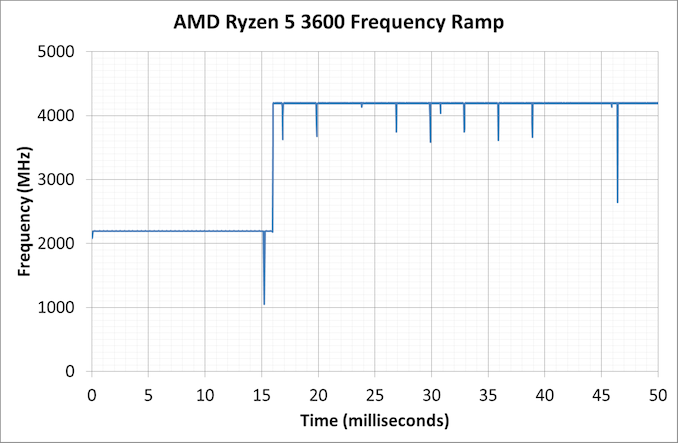
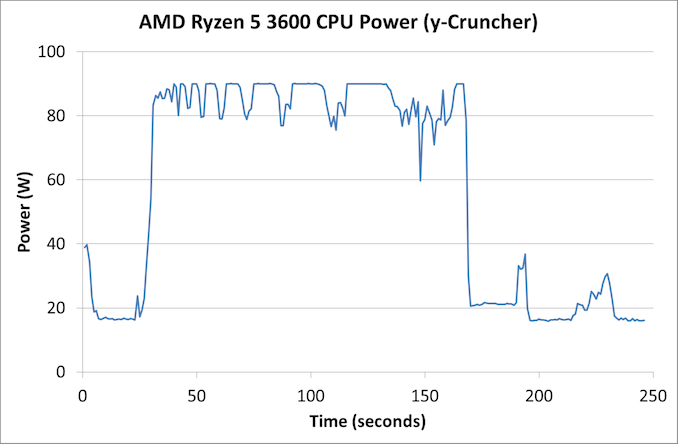
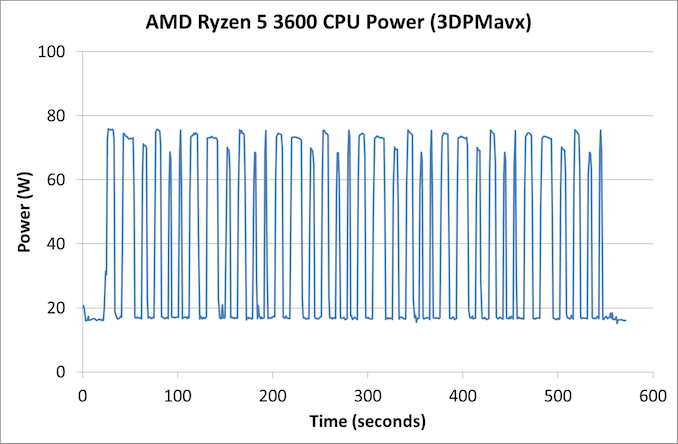
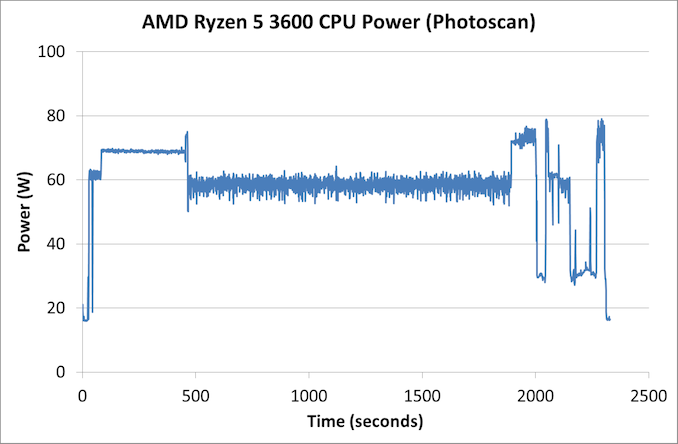
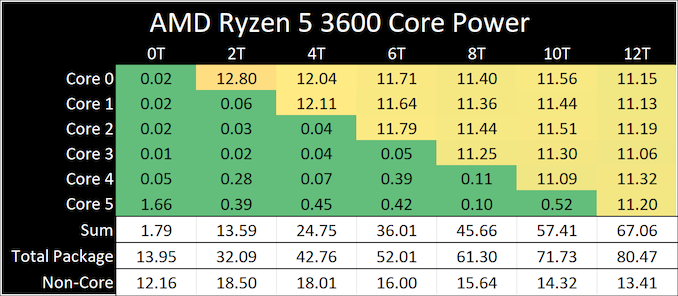
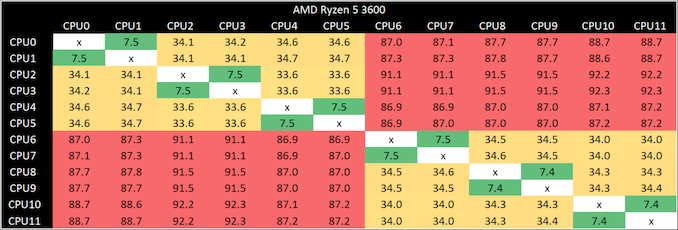








114 Comments
View All Comments
Walkeer - Wednesday, May 20, 2020 - link
Why use 3200MHz DRAM when 3600 is known to perform best with 3600? I think it was proven here on this server: https://www.anandtech.com/show/14605/the-and-ryzen...MrMaestro - Thursday, May 21, 2020 - link
A modern day Q6600: the people’s chip!asgehrj - Thursday, May 21, 2020 - link
Very interesting article.But I think you should update the motherboard part regarding the new situation of upgrade abilities.
markbrownjoh - Thursday, November 25, 2021 - link
Hello, I'm here to ask if what's the difference between Ryzen 5 3600 and 5 3600X? I need to buy one but I couldn't decide yet.